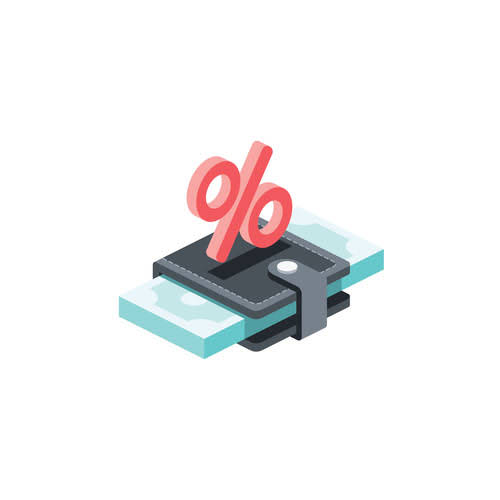
Imagine you own a smartphone manufacturing company that expects to sell 20,000 devices. Each smartphone costs you $100 to produce, and your selling price each smartphone is $300. Companies utilize incremental revenue as a comparative measure with their baseline revenue level to calculate their return on investment. They may then determine how much money they can afford to spend on marketing efforts and how much sales volume is required to generate a profit for the company. When making short-term decisions or selecting between two possibilities, such as whether to accept a special order, incremental costs are important.
- However, care must be exercised as allocation of fixed costs to total cost decreases as additional units are produced.
- By incorporating this analysis into decision-making, companies can allocate resources efficiently and minimize risks.
- But then you are looking at making 5,000 more shirts as your labor, machinery, and production input tells you you can.
- Understanding the calculation of incremental costs is pivotal for businesses as it directly influences their decision-making process.
- The reason for the relatively small incremental cost per unit is due to the cost behavior of certain costs.
Incremental Costs Vs Margin Costs
- Marketing strategists use incremental cost analysis to assess the viability of promotional campaigns.
- Meanwhile, a strategic planner would consider incremental costs when evaluating the potential of entering new markets or launching new products.
- The moment one extra unit produced does not generate the required return, the business needs to modify its production process.
- Externalities are costs (or benefits) that are not borne by the parties to the economic transaction.
Understanding incremental manufacturing cost guides strategic business decisions by providing a clear picture of the financial impact of production changes. Companies can evaluate whether increased production enhances profitability or simply offsets additional expenses. This analysis helps identify inefficiencies in production processes, enabling better resource allocation. Understanding incremental expenses can assist a business in improving its efficiency and saving money. Incremental costs can also help you decide whether to make a product or buy it elsewhere. Understanding the additional costs of increasing a product’s manufacturing is beneficial when deciding the retail price of the product.
How To Calculate Incremental Cost

In economics, marginal cost is the change in total production cost that retained earnings comes from making or producing one additional unit. To calculate marginal cost, divide the change in production costs by the change in quantity. Incremental costs (or marginal costs) help determine the profit maximization point for an organization. If a business is earning more incremental revenue (or marginal revenue) per product than the incremental cost of manufacturing or buying that product, the business earns a profit. It’s calculated by analyzing the additional expenses incurred based on the addition of the unit.
Significance of Incremental Costs in Business
In the service industry, such as a consulting firm, incremental costs are often tied to the time and resources spent on each additional client or project. For example, taking on a new client may require extra hours from staff members, potentially leading to overtime wages or the need to hire additional personnel. When the marginal social cost of production is less than that of the private cost function, there is a positive externality of production. Production of public goods https://www.bookstime.com/articles/outsourced-bookkeeping-solutions is a textbook example of production that creates positive externalities.

Strategic Decision Making with Incremental Costs

For example, manufacturing an additional 500 units increases the cost of raw materials like aluminum or fabric. Accurate tracking incremental cost of these costs ensures compliance with financial reporting standards and precise inventory valuations. Effective management of materials, such as bulk purchasing or supplier negotiations, can lead to cost savings and improved profitability.
- Businesses must determine the exact volume at which they can get the greatest value.
- Non-linear cost behavior, such as economies or diseconomies of scale, further complicates calculations.
- For instance, if incremental costs are low, a company might pursue a penetration pricing strategy to quickly gain market share by offering lower prices than competitors.
- Therefore, (refer to “Average cost” labelled picture on the right side of the screen.
- They provide valuable information for decision-making across various departments within a company.
Example of How to Use Marginal Cost
Incremental costs are usually lower than a unit average cost to produce incremental costs. Incremental costs are always composed of variable costs, which are the costs that fluctuate with production volumes. When incremental costs are added, the fixed costs normally do not change, implying that the cost of the equipment does not vary with production levels.

Incremental Cost Vs Incremental Revenue
However, it will also raise the actual cost, because it will increase the number of people in a region being paid lower than a living wage. This can especially be seen in places still considered part of the “developing” world, where many of the jobs have been outsourced from the West. Incremental cost is the cost incurred due to an additional unit of a product being produced. This is the increase/decrease in the cost of producing one more additional unit or serving one more additional customer. Companies need to make profitable business decisions when aiming for operational expansion. A revenue and expense analysis from production, defined by incremental cost, will save you a lot of financial troubles.

The Calculation of Incremental Costs
They provide valuable information for decision-making across various departments within a company. By carefully analyzing and managing incremental costs, businesses can optimize their production, pricing, and overall financial health. Understanding this relationship is essential for sustaining competitive advantage and achieving long-term success.
Marginal cost
- By carefully analyzing these costs, businesses can make informed decisions that enhance efficiency, competitiveness, and profitability.
- Understanding and analyzing these costs is crucial for managers and decision-makers who aim to optimize operations, maximize profits, and stay competitive in the market.
- Much of the time, private and social costs do not diverge from one another, but at times social costs may be either greater or less than private costs.
- Marginal cost is the change of the total cost from an additional output (n+1)th unit.
- Unlike fixed costs, which remain constant regardless of the level of production, incremental costs vary with the level of output and can significantly impact the average cost per unit.
- Economies of scale occur when expanding production results in cheaper costs because the costs are spread out over a greater number of commodities produced.
Calculating incremental manufacturing cost involves analyzing the additional expenses incurred when production increases. Tools like cost-volume-profit (CVP) analysis help determine the break-even point and the relationship between production volume, costs, and profits. Sensitivity analysis can further evaluate how changes in production impact costs, enabling data-driven decision-making.
